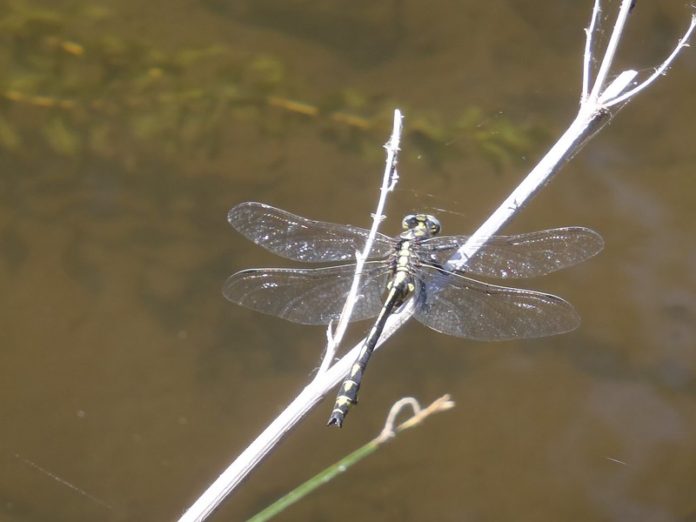Written by: Jason Cotta
Dragonfly adults are beautiful, but they are not often available to fish because they are such strong fliers.
Photo by Jason Cotta
Summer is finally here, and stillwater fishing is starting to heat up. Rising water temperatures will bring out swarms of damselflies and dragonflies. Trout and bass will feed heavily on these two bugs throughout the spring and summer. Although the two insects have discernible differences, they are often misidentified by novice and even experienced anglers. Here are a few simple tips on identifying damsels and dragons that will help you distinguish between the two.
Dragonflies make their home in slower moving pools on rivers and in lakes. The nymph is generally short, stocky, and brown or green in color. When determining what color nymph to tie on, take into consideration the color of the insect’s environment. Insects will closely match the color of their surroundings to help camouflage themselves from would-be predators. If the area has a lot of weeds, try an olive nymph; if there is a mud-and-rock bottom, go with a brown.

This durable and high-floating Gibson’s Dragon Fly is tied tough enough for big trout.
Photo via orvis.com
Once mature, the dragonfly nymph will crawl out of the water, shed its nymphal shuck, and take its adult form. Dragonfly adults are usually very large with thick bodies and are blue or green in color. When the adult lands and is at rest, its wings will be splayed out to its side. Dragonfly adults are great flyers and are rarely taken by trout, making the nymph the only viable food source.
Damselflies are much smaller than dragonflies but hatch in far greater numbers. Damselflies live in weedy areas of lakes and slower pools in rivers. The damselfly nymph is long, slender, and olive or brown in color. During the summer, large migrations of damsels will make their way out of the water where the insects shed their nymphal shucks and take on their adult form. Fish will feed heavily on the nymphs, and fishing a damsel nymph on an intermediate line around weedbeds can be a great recipe for success. When choosing your damselfly nymph, try to pick a pattern that is very thin, to mimic the naturals.

Slender damselflies often get blown onto the water’s surface, where trout and bass will feed on them voraciously.
Photo by Jason Cotta
The damselfly adult has a very thin body and is blue or green in color. When at rest, the damsel’s wings will be swept back over its body. While damselflies are great fliers, they are not very strong. If there is any wind, damsels will often be blown into the water, where they will get trapped in the surface film. Here, they are easy pickings for trout, and a dry fly can be very productive.
Like with any fly fishing situation, knowing what type of bugs fish are eating will greatly increase your chances of getting one on the line. Hopefully these tips will help you catch more fish this summer.
Credit: Source link































